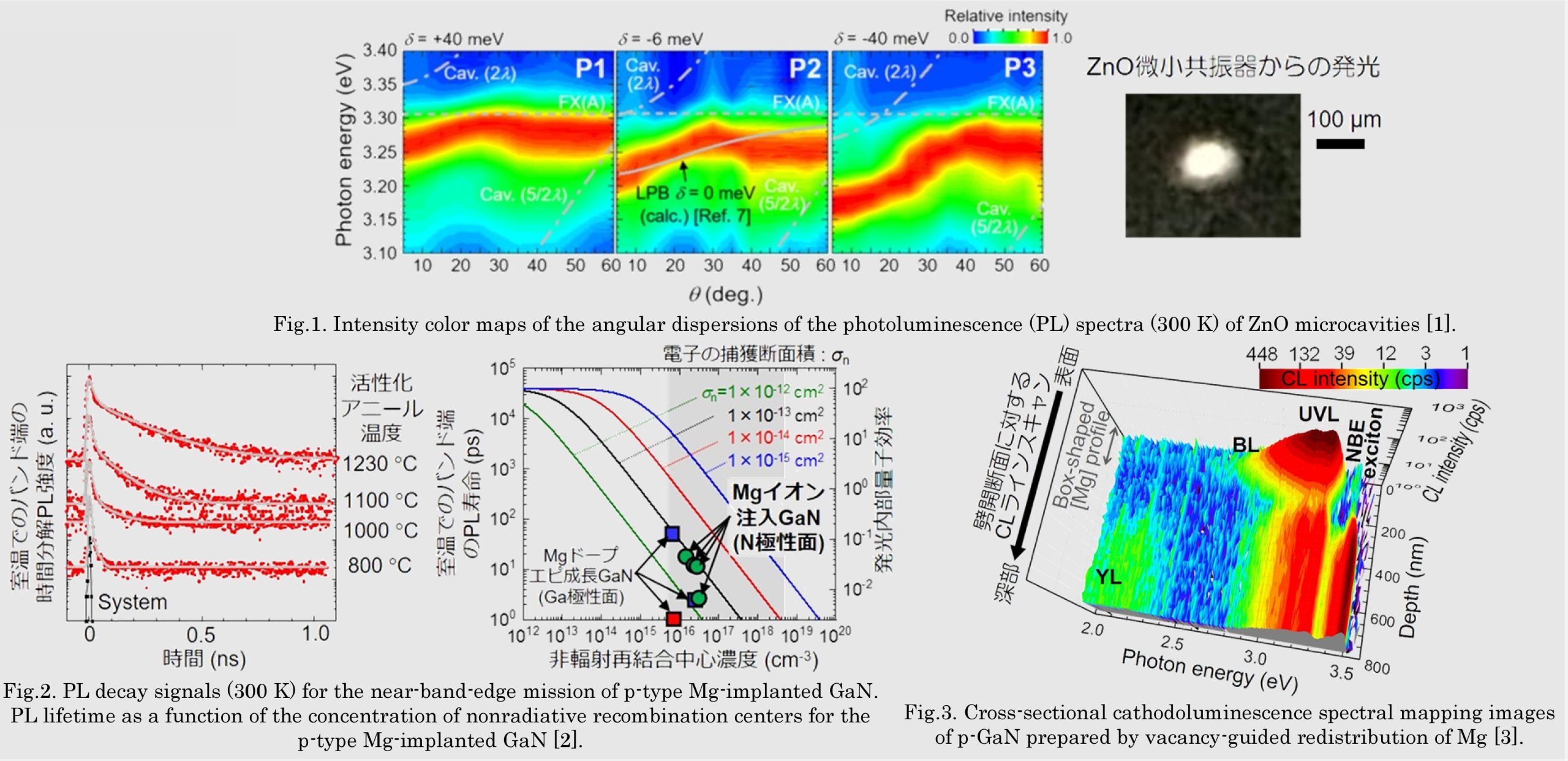
IMRAM
Institute of Multidisciplinary Research for Advanced Materials, Tohoku University
東北大学
多元物質科学研究所

LAST UPDATE 2021/05/05
-
研究者氏名
Researcher Name嶋紘平 Kohei SHIMA
准教授 Associate Professor -
所属
Affiliation東北大学 多元物質科学研究所
計測研究部門 量子光エレクトロニクス研究分野
Institute of Multidisciplinary Research for Advanced Materials, Tohoku University
Division of Measurements, Quantum Optoelectronics -
研究キーワード
Research Keywords光電子デバイス
ワイドバンドギャップ半導体
気相薄膜成長
Optoelectronic devices
Wide bandgap semiconductors
Vapor phase deposition and epitaxy
- 研究テーマ
Research Subject -
ワイドバンドギャップ半導体を用いた高効率光電子デバイスの開発
Development of high-efficiency optoelectronic devices using wide bandgap semiconductors
研究の背景 Background of the Research
半導体レーザは時間的・空間的コヒーレンシーの高い固体光源として、情報通信や光ディスクなどに広く使用されている。しかし、半導体レーザの発振にはキャリアの反転分布を必要とするため、レーザ発振閾値電流密度が高い(数kA/cm2)という課題が残されている。この閾値電流密度を大幅に低減し更なる省エネに貢献できる新光源として、微小共振器の光モードと励起子とが強結合することで形成される励起子ポラリトンの発光に基づいて動作する、ポラリトンレーザが近年大きな注目を浴びている。
Laser diodes are widely used as solid-state light sources for data transmitters and optical disks due to highly spatial and temporal coherence of their light waves. However, the laser diodes need inversion of the carrier in light emitting, and thus the threshold current density is relatively high (~a few kA/cm2). Recently, as a new laser source capable of reducing the threshold current density and contributing to further energy saving, polariton laser based on light emitting of exciton-polaritons in a strongly coupled microcavity has attracting a great attention.
研究の目標 Research Objective
汎用的なポラリトンレーザを実現するためには、窒化ガリウム(GaN)や酸化亜鉛(ZnO)などのワイドバンドギャップ半導体を高品質に結晶成長させる技術が不可欠である。特に、結晶中に不純物や点欠陥が存在すると、それらは非輻射再結合中心として働くため、ポラリトンレーザの発光効率を低下させる原因となる。本研究は、このような非輻射再結合中心の濃度を大幅に低減することを目的として、有機金属気相エピタキシー法やヘリコン波励起プラズマスパッタエピタキシー法を発展させる。
To realize practical polariton lasers, development of film-growth techniques of high-quality wide bandgap semiconductors including GaN and ZnO is essential. In particular, residual impurities and point defects in the grown films work as nonradiative recombination centers (NRCs), and degrade the efficiency of polariton lasing. This study focuses on developing film-growth techniques including metal-organic vapor phase epitaxy and helicon-wave-excited-plasma sputtering epitaxy to eliminate such NRCs in the films.
研究図Figures

Fig.2. PL decay signals (300 K) for the near-band-edge mission of p-type Mg-implanted GaN. PL lifetime as a function of the concentration of nonradiative recombination centers for the p-type Mg-implanted GaN [2].
Fig.3. Cross-sectional cathodoluminescence spectral mapping images of p-GaN prepared by vacancy-guided redistribution of Mg [3].
論文発表 / Publications
[1] Appl. Phys. Lett, 117 (2020) 071103, [2] Appl. Phys. Lett., 113 (2018) 191901, [3] Appl. Phys. Lett., 119 (2021) 182106.
研究者連絡先 / HP
- kshima
 tohoku.ac.jp
tohoku.ac.jp - https://www2.tagen.tohoku.ac.jp/lab/chichibu/html/index-j.html